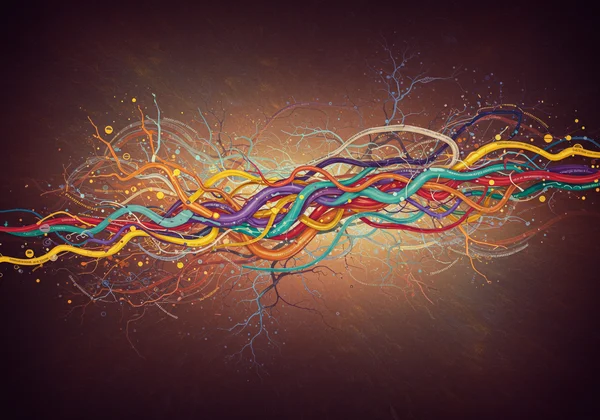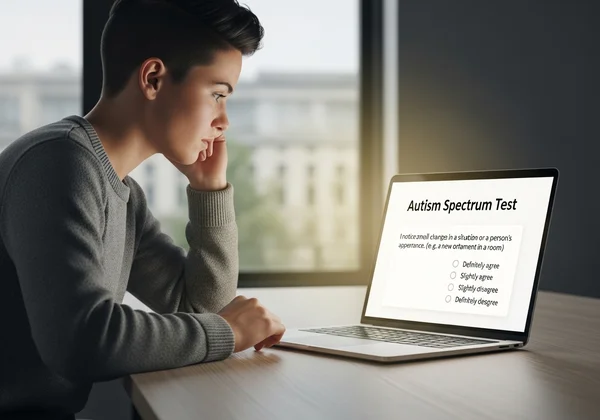Autism Spectrum Test: Understanding Core Signs of ASD
Have you ever found yourself wondering about the unique ways people experience the world? Perhaps you've observed certain traits in yourself, your child, or a loved one that seem different from the norm. Navigating the world of Autism Spectrum Disorder (ASD) can feel complex. This guide aims to unravel some of that complexity, offering a clear overview of its core characteristics. What are the signs of autism in adults/children? Understanding these signs is the first step toward clarity and support. The journey to insight can begin with a simple, confidential autism spectrum test, and we're here to guide you. If you're ready to explore, you can take our free test today.
What is Autism Spectrum Disorder (ASD)?
Autism Spectrum Disorder is a neurodevelopmental condition that influences how a person perceives the world, processes information, communicates, and interacts with others. It's not a disease or an illness; rather, it's an integral part of an individual's identity. The term "neurodiversity" celebrates these differences, viewing them as natural variations in the human brain. Understanding ASD is not about finding a "cure" but about fostering support, acceptance, and accommodation for autistic individuals to thrive.
Defining the Spectrum: Why "Spectrum"?
The word "spectrum" is crucial because it highlights the vast diversity within the autistic community. There is no single "look" or experience of autism. It manifests differently in every person, with a unique combination of strengths and challenges. Some autistic individuals may be non-verbal and require significant daily support, while others may excel in their careers and have families, with their traits being more subtle. This wide range of experiences is why a one-size-fits-all approach is ineffective.

Core Diagnostic Criteria: A Brief Overview
To provide a framework for understanding, mental health professionals typically look at two core areas when considering an ASD diagnosis. These are persistent differences in social communication and social interaction, alongside restricted, repetitive patterns of behavior, interests, or activities. Remember, an online autism test serves as a preliminary screening tool to identify these traits, while a formal diagnosis can only be made by a qualified professional.
Key Signs & Characteristics of Autism
Recognizing the signs of autism is the primary goal for many who seek out information. These characteristics are not flaws but simply different ways of being. They can be broadly grouped into a few key areas, which often overlap and influence one another. This understanding can be a crucial part of self-discovery or helping a loved one.
Social Communication & Interaction Differences
This is one of the most well-known aspects of autism. Autistic individuals may find navigating the unwritten rules of social engagement challenging. This can include difficulty interpreting non-verbal cues like body language, facial expressions, or tone of voice. They might also find it hard to initiate or maintain conversations, understand sarcasm or figurative language, or share imaginative play with peers. It's not a lack of desire for connection, but rather a difference in the brain's social wiring.
Repetitive Behaviors & Restricted Interests
This category describes a tendency toward sameness and routine. This can manifest as repetitive physical movements, often called "stimming" (e.g., hand-flapping, rocking, or spinning), which can be a way to self-regulate emotions or manage sensory input. Many autistic individuals also have deep, highly focused interests, sometimes called "special interests." They might become experts on specific topics, finding great joy and comfort in learning everything they can about them. A strong preference for predictability and routines is also common.
Sensory Processing Sensitivities
Many people on the autism spectrum experience the world through a heightened or dulled sensory system. This means they can be hypersensitive (over-responsive) or hyposensitive (under-responsive) to sights, sounds, smells, tastes, or touch. A bustling supermarket might feel like a sensory assault due to bright lights and loud noises (sensory overload), while another person might seek out strong pressure or intense flavors. These sensory needs are a fundamental part of the autistic experience.

Autism Characteristics Across All Ages
Autism is a lifelong condition, but its presentation can change significantly with age and experience. Recognizing the signs requires looking at age-appropriate behaviors and considering how social expectations shift over time. A reliable childhood autism spectrum test will ask different questions than one designed for adults.
Early Signs in Young Children (Infants & Toddlers)
For concerned parents, identifying early signs is key to accessing support. In infants and toddlers, you might notice a lack of response to their name, delayed speech development, or limited eye contact. They might not engage in typical babbling or pointing gestures to show interest. Other signs include not participating in simple interactive games like peek-a-boo, having unusual and intense reactions to sensory stimuli, or showing a strong preference to play alone.
Recognizing Traits in Teens & Adolescents
As children enter their teen years, social landscapes become infinitely more complex. An autistic teen may struggle to make or keep friends, finding small talk and group dynamics confusing. They might be perceived as blunt or eccentric. Their deep interests may seem unusual to peers, and the pressure to "fit in" can lead to significant anxiety or depression. This is an age where an autism spectrum test for teens can be a valuable tool for self-understanding.
Adult Autism: Subtle Presentations & Masking
Many adults reach out for an adult autism assessment online after a lifetime of feeling "different" without knowing why. In adults, especially women, autistic traits can be subtle due to a phenomenon called "masking" or "camouflaging." This involves consciously or unconsciously mimicking the social behaviors of non-autistic people to hide their difficulties. While it can help them navigate social situations, masking is mentally and emotionally exhausting and can lead to burnout.

Taking the Next Step: Understanding & Action
Recognizing yourself or someone you care about in these descriptions can be a profound moment. It’s a moment of questioning, reflection, and seeking clarity. This understanding is not an end point but a beginning. It opens the door to self-acceptance, better support systems, and strategies that honor one's neurological makeup.
If this information resonates with you, the next logical step is to gather more personalized insight. Our confidential and scientifically-based autism spectrum test is designed for this very purpose. It can help you organize your observations and provide a preliminary summary of traits, empowering you with the knowledge to decide what comes next.
Ready to gain clarity? Start your self-assessment on our homepage today.

Frequently Asked Questions About Autism Signs & Tests
How do I know if I am autistic?
Self-reflection is the first step. If you consistently identify with the core traits—such as difficulties in social communication, a strong need for routine, deep interests, and sensory sensitivities—it may be worth exploring further. Taking a validated online screening like the one on our site can provide structured insight before seeking a professional opinion.
What are the signs of autism in adults/children?
In children, signs often relate to developmental milestones, like delayed speech or not engaging in interactive play. In adults, signs may be more internalized, such as chronic social exhaustion from masking, difficulty with workplace small talk, or an intense need for a predictable routine to avoid anxiety.
Can you be mildly autistic?
Because autism is a spectrum, individuals require varying levels of support. Some people have traits that are less impactful on their daily functioning, which some might refer to as "mildly autistic" or previously "Asperger's." However, everyone's experience is valid, and even subtle traits can present significant internal challenges.
What are the 5 main symptoms of autism?
While not a simple checklist, the core areas are: 1) challenges with social-emotional reciprocity, 2) difficulty with nonverbal communication, 3) trouble developing and maintaining relationships, 4) restricted, repetitive patterns of behavior or interests, and 5) sensory sensitivities. The intensity of these varies greatly.
Is an online autism test accurate?
A well-designed online screening test, based on tools like the Autism-Spectrum Quotient (AQ), is a highly reliable way to identify autistic traits for further consideration. It is not a formal diagnosis. Think of it as an accurate and insightful first step that can help you decide whether to pursue a full diagnostic evaluation with a healthcare professional. You can explore the assessment here to see how it works.